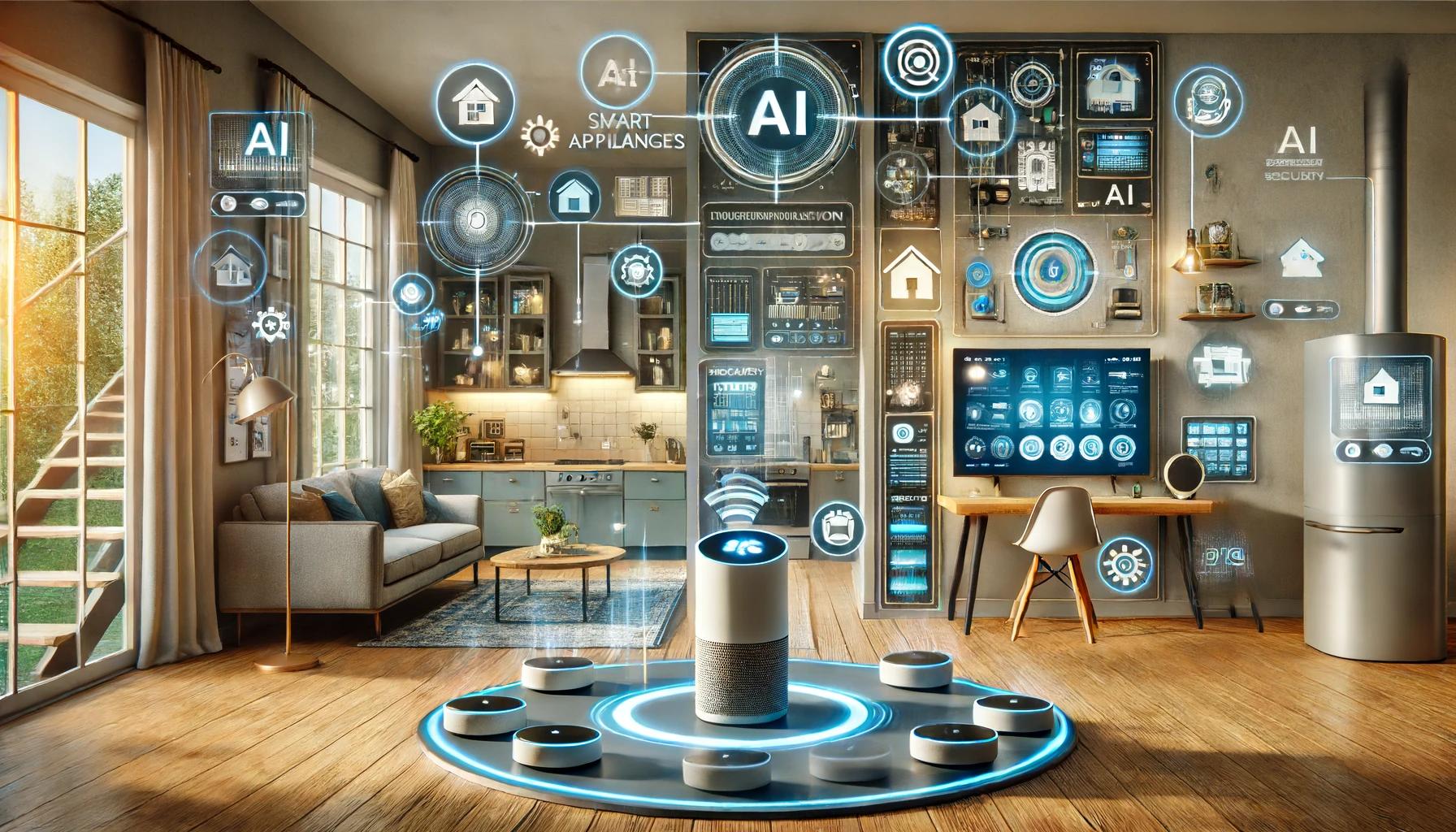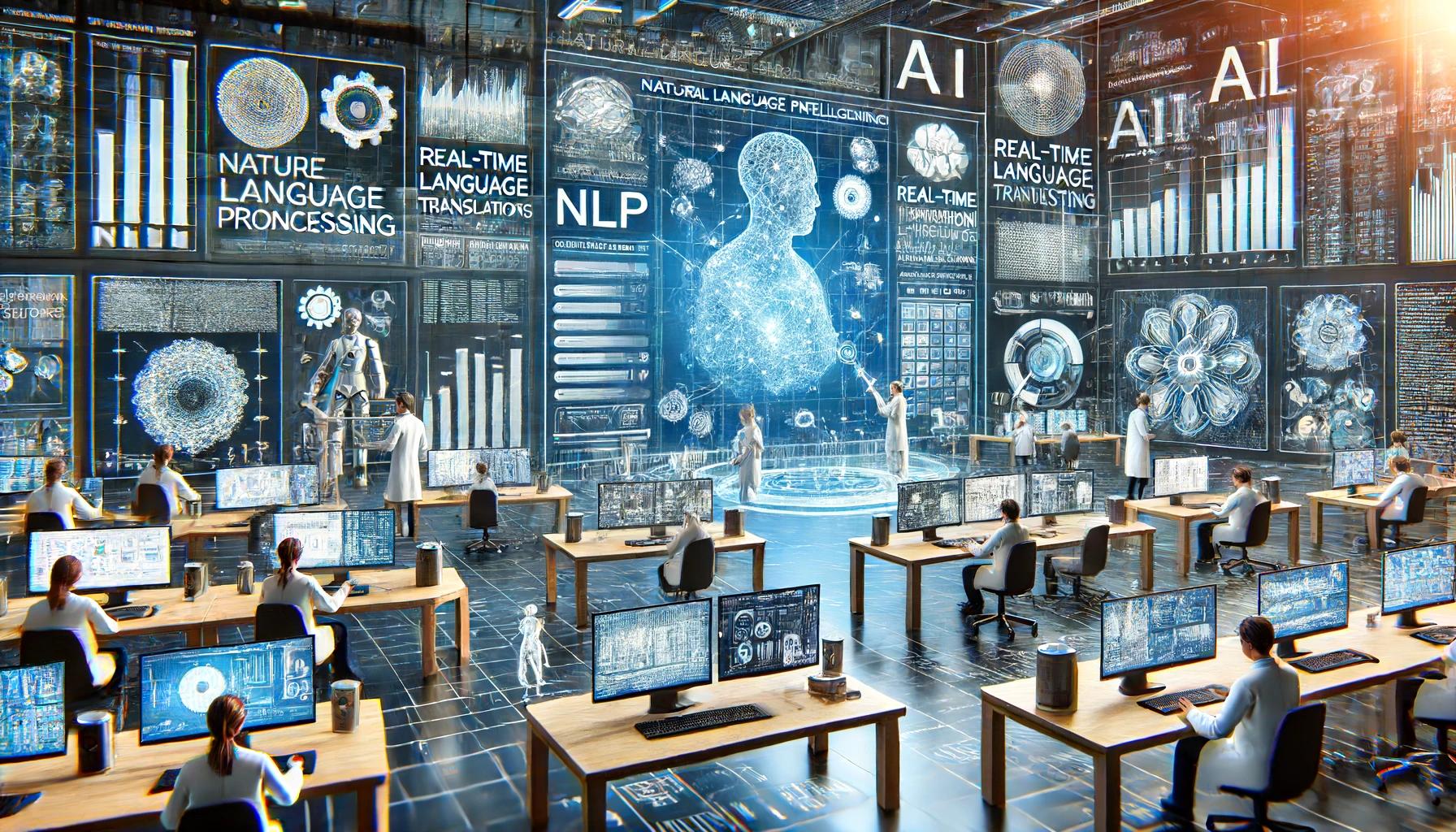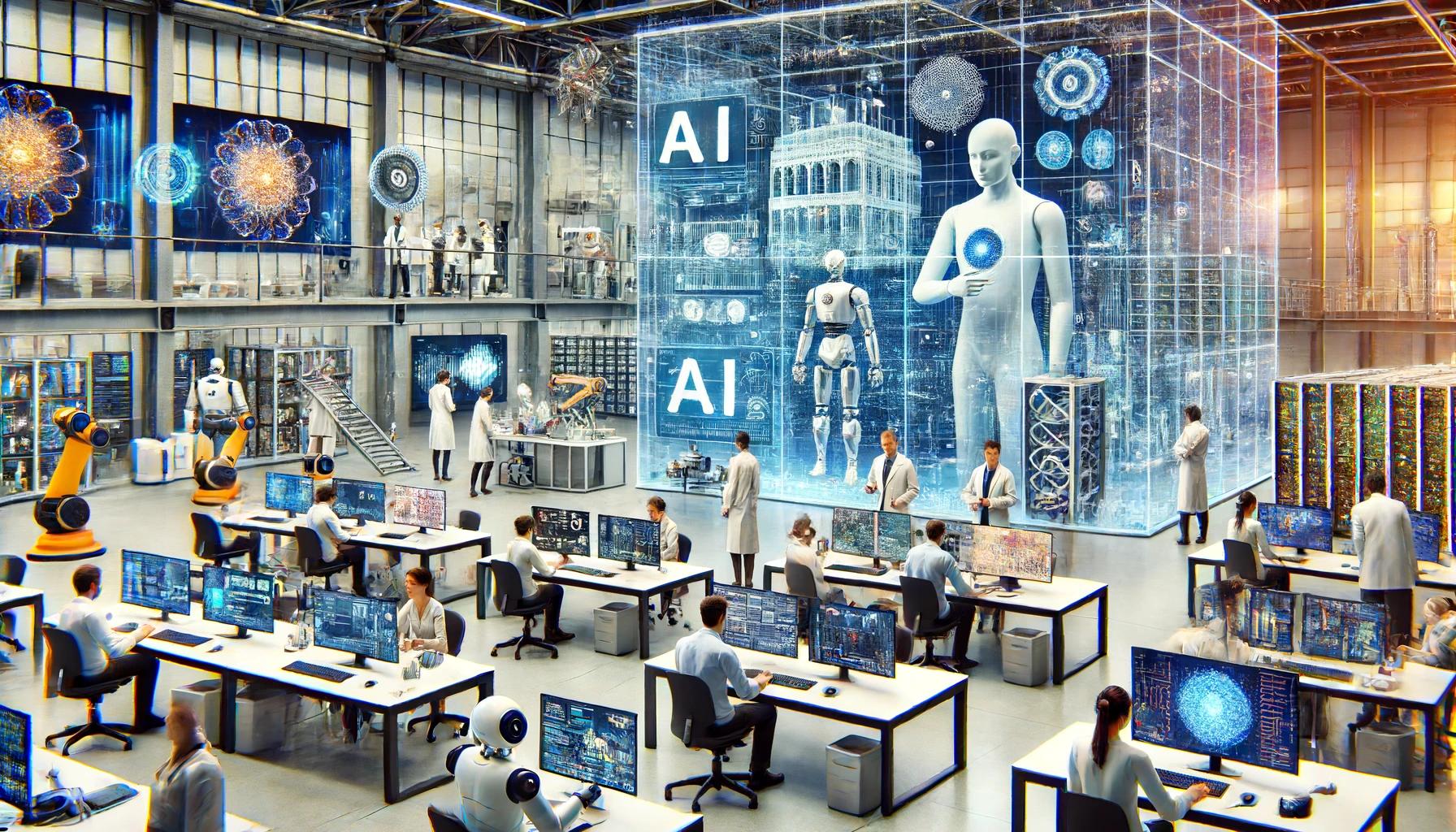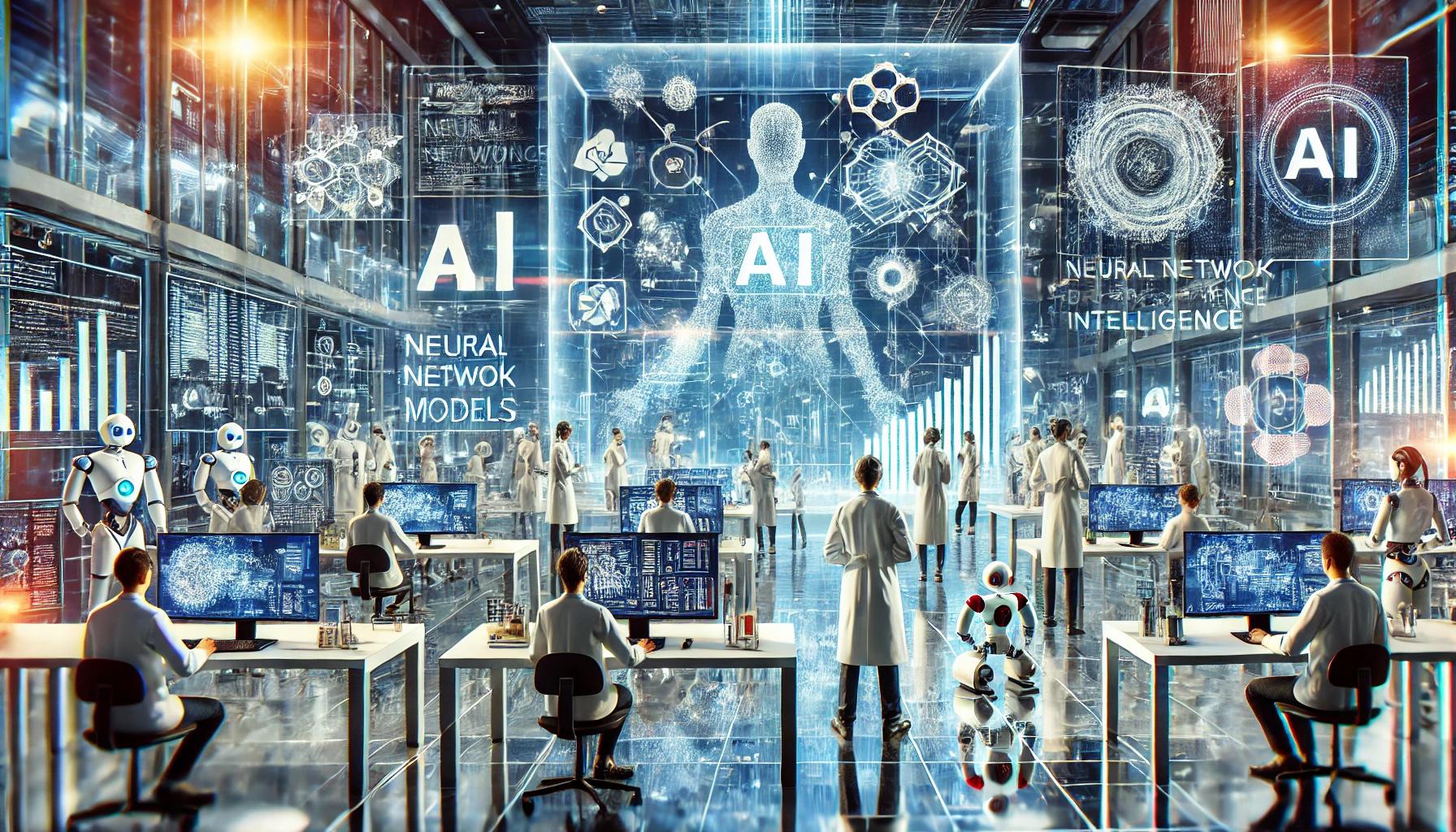- Introduction
- Brief Overview of AI in Technology
- Definition of Smart Homes
- Importance of AI in Enhancing Smart Home Functionalities
- Historical Background
- Evolution of Smart Home Technology
- Milestones in AI Development for Home Automation
- Key Components of AI in Smart Homes
- AI-Powered Devices
- Machine Learning Algorithms
- Internet of Things (IoT) Integration
- Benefits of AI in Smart Homes
- Increased Convenience and Efficiency
- Enhanced Security and Safety
- Energy Management and Sustainability
- Personalized User Experiences
- Challenges and Concerns
- Privacy and Data Security Issues
- High Costs and Accessibility
- Interoperability and Standardization
- Current Trends and Innovations
- Voice-Activated Assistants
- Predictive Maintenance and Automation
- Health Monitoring and Elder Care
- Future Prospects
- Advanced AI Capabilities
- Expansion of Smart Home Ecosystems
- Potential Societal Impacts
Introduction
Brief Overview of AI in Technology
Artificial Intelligence (AI) has rapidly evolved from a theoretical concept to a cornerstone of modern technology. Initially, AI focused on developing algorithms that could mimic human intelligence. Over the years, advancements in machine learning, neural networks, and data analytics have propelled AI into various sectors, from healthcare to finance, and now, home automation. AI’s capability to analyze vast amounts of data and make decisions in real-time has made it indispensable in enhancing efficiency, productivity, and user experience across different applications. For more information on AI’s development, visit Towards Data Science.
Definition of Smart Homes
A smart home refers to a residence equipped with devices and systems interconnected through the Internet of Things (IoT). These devices can include anything from lighting, heating, and air conditioning to security systems and entertainment units. Smart homes utilize technology to provide homeowners with convenience, comfort, energy efficiency, and security through the seamless integration of these devices. By allowing control through mobile apps or voice commands, smart homes create an interactive and responsive living environment. Learn more about smart home technology on TechTarget.
Importance of AI in Enhancing Smart Home Functionalities
AI plays a crucial role in advancing smart home functionalities by making them more intuitive and efficient. Through machine learning algorithms, AI can learn user preferences and habits, enabling smart home systems to anticipate needs and automate tasks accordingly. For instance, AI-powered thermostats can adjust temperatures based on past usage patterns and current weather conditions, while smart security systems can distinguish between familiar and unfamiliar faces, enhancing home security. The integration of AI not only boosts convenience but also contributes to energy savings and personalized user experiences. To explore how AI is transforming smart homes, check out Wired.
These elements combined illustrate how AI is becoming an integral part of smart homes, enhancing their capabilities and making daily life more efficient and secure.
Historical Background
Evolution of Smart Home Technology
The concept of smart home technology dates back to the early 20th century with the invention of simple automation devices like the thermostat and automated lighting. However, the real evolution began in the late 20th century with the advent of personal computers and the internet. The 1980s and 1990s saw the introduction of home automation systems that could control lighting, climate, and security systems via wired networks.
In the 2000s, wireless technology and the Internet of Things (IoT) revolutionized smart home technology. Devices could now communicate over Wi-Fi, making installation and control much more convenient. The introduction of smartphones further accelerated this trend, as homeowners could control their smart devices remotely via mobile apps. For a detailed history of smart home technology, visit IoT For All.
Milestones in AI Development for Home Automation
AI’s integration into home automation has seen significant milestones over the past few decades. One of the earliest AI applications in home automation was the development of machine learning algorithms that could optimize heating and cooling systems based on user behavior and environmental conditions.
In 2011, the launch of Siri by Apple marked a significant milestone, introducing voice-activated AI assistants to the general public. This was followed by the introduction of Amazon’s Alexa in 2014 and Google Assistant in 2016, which further popularized AI-driven voice control in smart homes.
Another critical milestone was the development of AI-powered security systems. Companies like Nest (acquired by Google) introduced smart cameras and doorbells with facial recognition capabilities, enhancing home security through advanced AI algorithms.
More recently, AI has enabled predictive maintenance, where home systems can anticipate issues before they occur and notify homeowners, thus preventing potential problems. This evolution showcases the rapid advancements and increasing sophistication of AI in enhancing home automation. For more information on AI milestones in home automation, check out TechCrunch.
Key Components of AI in Smart Homes
AI-Powered Devices
AI-powered devices form the backbone of modern smart homes, enhancing convenience, security, and efficiency. These devices include:
- Smart Speakers: Devices like Amazon Echo and Google Home are equipped with AI assistants (Alexa and Google Assistant) that respond to voice commands, control other smart home devices, play music, set reminders, and provide real-time information.
- Smart Thermostats: Devices such as the Nest Learning Thermostat and Ecobee use AI to learn user preferences and automatically adjust heating and cooling systems to optimize comfort and energy savings.
- Smart Security Systems: AI-enhanced security systems include cameras with facial recognition, smart locks, and alarm systems that can detect unusual activity and alert homeowners in real-time. These systems can differentiate between familiar faces and potential intruders, enhancing home security. For more information on AI-powered devices, visit CNET.
Machine Learning Algorithms
Machine learning algorithms are at the heart of AI in smart homes, enabling devices to learn from data and improve over time. These algorithms analyze patterns in user behavior and environmental conditions to make informed decisions and predictions. For example:
- Behavioral Analysis: Smart home systems track and analyze user interactions to tailor their responses and automate routines. A smart lighting system might learn when you typically wake up and adjust the lights accordingly.
- Predictive Maintenance: Machine learning can predict when a device is likely to fail and alert homeowners, allowing for preventive maintenance and reducing downtime.
- Energy Management: Algorithms optimize energy consumption by learning when and how energy is used in the home, reducing waste and lowering utility bills. To learn more about machine learning in smart homes, check out MIT Technology Review.
Internet of Things (IoT) Integration
The Internet of Things (IoT) is a network of interconnected devices that communicate and share data with each other. IoT integration is crucial for the seamless operation of smart homes, as it allows devices to work together to create a cohesive and responsive environment. Key aspects include:
- Interconnectivity: Devices such as lights, thermostats, security cameras, and appliances can be controlled from a central hub or app, ensuring coordinated functionality.
- Data Sharing: IoT devices share data in real-time, enabling AI algorithms to analyze and respond to changing conditions quickly. For example, a smart thermostat can adjust the temperature based on data from motion sensors and weather forecasts.
- Remote Control: Homeowners can monitor and control their smart home devices from anywhere using a smartphone or tablet, providing convenience and peace of mind.
The integration of AI and IoT creates a smart home ecosystem that is intelligent, responsive, and efficient, transforming the way we live. For more information on IoT in smart homes, visit IoT Agenda.
Benefits of AI in Smart Homes
Increased Convenience and Efficiency
AI in smart homes significantly enhances convenience and efficiency. With AI-powered devices, homeowners can automate routine tasks, reducing the need for manual intervention. For example:
- Voice Commands: Smart speakers like Amazon Echo and Google Home enable hands-free control of various devices, allowing users to adjust lighting, set reminders, and control appliances through simple voice commands.
- Automated Routines: AI can create and manage automated routines based on user habits. For instance, lights can turn on and off according to your daily schedule, or the coffee maker can start brewing as soon as you wake up.
- Remote Access: Homeowners can monitor and control their smart home systems from anywhere using their smartphones, providing unparalleled convenience and control. For more insights on AI-driven convenience, visit TechRadar.
Enhanced Security and Safety
AI enhances home security and safety through intelligent monitoring and alert systems. Key features include:
- Facial Recognition: AI-powered security cameras can distinguish between familiar faces and strangers, sending real-time alerts if an unknown person is detected.
- Smart Locks: These devices allow homeowners to lock and unlock doors remotely, grant temporary access to guests, and receive notifications when someone enters or exits.
- Intrusion Detection: Advanced algorithms can identify unusual activity and potential security threats, triggering alarms and notifying homeowners immediately.
- Fire and Hazard Detection: AI-enabled sensors can detect smoke, carbon monoxide, and other hazards, providing early warnings and automatically contacting emergency services if necessary. For more details on AI in home security, check out Security Magazine.
Energy Management and Sustainability
AI contributes to energy efficiency and sustainability by optimizing the use of resources. Benefits include:
- Smart Thermostats: Devices like the Nest Learning Thermostat learn user preferences and adjust heating and cooling systems to save energy without compromising comfort.
- Energy Monitoring: AI systems track energy consumption patterns and suggest ways to reduce waste, such as turning off lights and appliances when not in use.
- Automated Adjustments: AI can dynamically adjust energy usage based on real-time data, such as weather conditions and occupancy, ensuring optimal efficiency.
- Renewable Energy Integration: AI can manage and optimize the use of renewable energy sources like solar panels, maximizing their efficiency and reducing reliance on non-renewable resources. For more information on AI and energy management, visit GreenBiz.
Personalized User Experiences
AI in smart homes provides personalized experiences by learning individual preferences and behaviors. Features include:
- Customized Settings: AI can adjust lighting, temperature, and entertainment systems to match personal preferences, creating a comfortable and tailored living environment.
- Predictive Assistance: Smart home systems can anticipate needs based on past behavior, such as suggesting playlists or adjusting lighting for specific activities.
- Health and Wellness Monitoring: AI can track health metrics, remind users to take medications, and even provide wellness tips, enhancing overall well-being.
- Adaptive Learning: As AI continues to learn from user interactions, it becomes more adept at predicting and meeting individual needs, improving the overall smart home experience over time. To explore more about personalized AI experiences, visit Digital Trends.
Challenges and Concerns
Privacy and Data Security Issues
One of the most significant challenges facing the smart home is privacy and data security. As AI technology and generative AI become more integrated into our daily lives, they collect vast amounts of personal data, raising concerns about how this information is used and protected. Key issues include:
- Data Breaches: Smart home devices are vulnerable to hacking and unauthorized access, potentially exposing sensitive personal information.
- Surveillance: The use of AI-powered cameras and voice assistants can lead to constant surveillance, infringing on personal privacy.
- Data Usage: There is often a lack of transparency regarding how companies use and share the data collected from smart home devices.
- Legislation and Regulation: Current regulations may not be adequate to protect consumers’ privacy in the rapidly evolving landscape of AI and generative AI technology. To learn more about privacy concerns in smart homes, visit Electronic Frontier Foundation.
High Costs and Accessibility
The adoption of AI technology in smart homes comes with high costs, which can be a barrier for many consumers. Key concerns include:
- Initial Investment: The cost of purchasing and installing smart home devices can be prohibitive, making it less accessible to lower-income households.
- Maintenance and Upgrades: Ongoing maintenance and the need for periodic upgrades add to the overall cost, making it a continuous financial commitment.
- Digital Divide: High costs contribute to the digital divide, where only affluent households can afford the benefits of AI-powered smart homes, leaving others behind.
- Affordability Solutions: Efforts are being made to develop more affordable smart home solutions, but widespread accessibility remains a challenge. For more information on the cost and accessibility of smart home technology, check out Consumer Reports.
Interoperability and Standardization
Interoperability and standardization are critical for the seamless integration and operation of AI technology in smart homes. However, there are significant challenges in this area:
- Compatibility Issues: Different brands and devices often use proprietary protocols, making it difficult for them to communicate and work together seamlessly.
- Lack of Standards: There is no universal standard for smart home technology, leading to fragmentation and incompatibility among devices and platforms.
- Vendor Lock-In: Consumers may find themselves locked into a single vendor’s ecosystem, limiting their options and flexibility.
- Industry Efforts: Initiatives like the Matter protocol aim to create common standards for smart home devices, promoting better interoperability. However, achieving widespread adoption remains a challenge. To learn more about interoperability and standardization in smart homes, visit The Verge.
Current Trends and Innovations
Voice-Activated Assistants
Voice-activated assistants, such as Amazon’s Alexa, Google Assistant, and Apple’s Siri, are among the most popular and rapidly advancing AI technologies in the smart home landscape. These assistants are continually evolving, with new capabilities and integrations that enhance their usefulness and convenience. Key trends include:
- Improved Natural Language Processing (NLP): Advances in NLP enable voice assistants to understand and respond to more complex and varied commands, making interactions more natural and intuitive.
- Integration with Smart Devices: Voice assistants are increasingly compatible with a wide range of smart home devices, allowing seamless control over lights, thermostats, security systems, and more.
- Generative AI: The incorporation of generative AI enhances the ability of voice assistants to generate more personalized responses and anticipate user needs, providing a more tailored experience.
- Multilingual Support: Enhanced language support allows users to interact with their voice assistants in multiple languages, broadening their accessibility and appeal. For more information on voice-activated assistants, visit Wired.
Predictive Maintenance and Automation
Predictive maintenance and automation are transforming the way smart homes operate by leveraging AI to anticipate and address potential issues before they become problems. Key innovations include:
- Predictive Analytics: AI algorithms analyze data from various smart home devices to predict when maintenance is needed, such as when an appliance is likely to fail, allowing for proactive repairs.
- Automation Systems: Smart home systems can automatically adjust settings based on user behavior and environmental conditions. For example, smart thermostats can learn your schedule and preferences to optimize heating and cooling, while lighting systems can adjust based on the time of day and occupancy.
- Energy Efficiency: Automation driven by AI helps in optimizing energy usage, reducing waste, and lowering utility bills by automatically turning off lights and appliances when not in use.
- Safety and Security: Automated security systems can lock doors, activate alarms, and notify homeowners of potential security breaches, enhancing overall safety. To learn more about predictive maintenance and automation, check out Forbes.
Health Monitoring and Elder Care
AI technology is playing a significant role in health monitoring and elder care, providing innovative solutions to enhance the well-being and safety of individuals, particularly the elderly. Key developments include:
- Wearable Health Devices: AI-powered wearables can monitor vital signs such as heart rate, blood pressure, and oxygen levels, providing real-time health data and alerts to users and caregivers.
- Fall Detection Systems: Advanced sensors and AI algorithms can detect falls and other emergencies, automatically alerting caregivers or emergency services, which is crucial for elderly individuals living alone.
- Medication Reminders: Smart home systems can provide reminders for medication schedules, ensuring that individuals take their medications on time and reducing the risk of missed doses.
- Remote Monitoring: AI enables remote health monitoring, allowing healthcare providers to track patients’ health conditions and intervene when necessary, without the need for frequent in-person visits.
- Personalized Care: AI systems can learn individual health patterns and provide personalized health recommendations, contributing to better overall health management. For more details on health monitoring and elder care innovations, visit HealthTech Magazine.
Future Prospects
Advanced AI Capabilities
The future of AI in smart homes is poised to bring even more advanced capabilities, transforming the way we live. Key areas of development include:
- Enhanced Context Awareness: Future AI systems will be more contextually aware, understanding not just commands but the environment and situational nuances, leading to more accurate and helpful responses.
- Emotion Recognition: AI will increasingly be able to recognize and respond to human emotions, providing more personalized interactions and improving user satisfaction.
- Augmented Reality Integration: Combining AI with augmented reality (AR) could offer new ways to interact with smart home systems, providing visual overlays and intuitive controls through AR devices.
- Advanced Generative AI: The use of generative AI will enhance the creativity and problem-solving abilities of smart home systems, enabling them to come up with innovative solutions for daily tasks and challenges.
- Autonomous Learning: AI systems will continue to improve their autonomous learning capabilities, reducing the need for manual programming and allowing them to adapt to new situations and user preferences more efficiently. For more on the future capabilities of AI, visit MIT Technology Review.
Expansion of Smart Home Ecosystems
The ecosystem of smart home devices and services is set to expand significantly, offering more comprehensive and interconnected solutions. Key trends include:
- Interoperability Improvements: Efforts to standardize smart home protocols, such as the Matter initiative, will make it easier for devices from different manufacturers to work together seamlessly, enhancing user experience.
- Expanded Device Range: The range of smart home devices will grow, including more specialized gadgets for various aspects of home life, such as smart kitchen appliances, advanced home entertainment systems, and AI-driven gardening tools.
- Integration with Smart Cities: Smart homes will increasingly integrate with broader smart city infrastructures, allowing for coordinated energy management, enhanced security, and better resource allocation at a community level.
- Subscription Services: The rise of subscription-based services for smart home maintenance, updates, and support will provide users with ongoing value and simplify the management of their smart home ecosystems.
- Eco-Friendly Solutions: There will be a greater focus on eco-friendly and sustainable smart home solutions, incorporating renewable energy sources and advanced energy-saving technologies. To explore more about the expansion of smart home ecosystems, visit Smart Home World.
Potential Societal Impacts
The widespread adoption of AI in smart homes will have significant societal impacts, reshaping various aspects of daily life and broader societal structures. Key considerations include:
- Digital Divide: While smart home technology can enhance quality of life, there is a risk of exacerbating the digital divide, as not everyone may have access to these advancements due to cost and infrastructure limitations.
- Job Market Shifts: The rise of AI and automation in homes and other sectors could lead to shifts in the job market, with some roles becoming obsolete while new opportunities in tech and AI maintenance arise.
- Privacy and Ethical Concerns: As AI systems become more integrated into daily life, concerns about privacy, data security, and the ethical use of AI will become more pronounced, necessitating robust regulations and ethical guidelines.
- Health and Well-being: Improved health monitoring and elder care solutions can lead to better health outcomes and enhanced quality of life for aging populations, reducing the burden on healthcare systems.
- Environmental Impact: AI-driven smart homes can contribute to more sustainable living practices, reducing energy consumption and promoting the use of renewable resources, positively impacting the environment. For more on the societal impacts of AI in smart homes, check out World Economic Forum.




